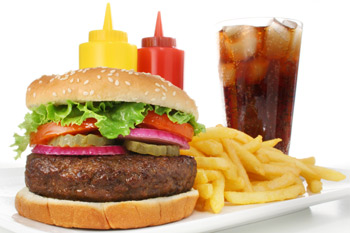Advertising obesity: Our brain and the dangerous appetite
By Anita Kar
 One of the most serious and growing threats to public health worldwide is obesity in both children and adults. Obesity fuels diabetes, cardiovascular and other chronic diseases – all of which can cause serious harm to patients, and strain healthcare systems. To better address the root causes of obesity, researchers at the Montreal Neurological Institute and Hospital - The Neuro, have studied the interplay between hormones and the human brain. More recently, they have made new discoveries about how the combination of advertising and a culture of convenience food affect our food choices and levels of consumption.
One of the most serious and growing threats to public health worldwide is obesity in both children and adults. Obesity fuels diabetes, cardiovascular and other chronic diseases – all of which can cause serious harm to patients, and strain healthcare systems. To better address the root causes of obesity, researchers at the Montreal Neurological Institute and Hospital - The Neuro, have studied the interplay between hormones and the human brain. More recently, they have made new discoveries about how the combination of advertising and a culture of convenience food affect our food choices and levels of consumption.
Several years ago, Dr. Alain Dagher, a neurologist and researcher at The Neuro, showed that ghrelin, a hormone produced by the stomach, not only triggers hunger, but also works in parts of the human brain that control reward and pleasure – the same areas involved in addictive behaviour. Ghrelin stimulates a powerful drive to eat which can be a factor in overeating and obesity.
“Ghrelin is secreted when the stomach is empty and activates regions of the brain to be more responsive to visual food cues, making food appear more appealing,” explained Dr. Dagher. “An easy analogy would be to think about when you go shopping on an empty stomach you tend to buy more food and products higher in calories.”
That earlier research combined with new brain imaging studies suggests that a major reason for the dramatic increase in obesity may be a heightened sensitivity to heavily advertised and easily accessible high-calorie foods. Obese individuals exhibit greater brain activation in response to sweet or fatty food cues like TV commercials that linger lovingly over a juicy burger and crispy fries, suggesting that such signals play a key role in motivating someone to eat.
Judging the value of food by how it looks, and especially by predicting its caloric content, may have once been an important mechanism when food was scarce. However, today’s hyper-advertised culture combined with the convenience of supermarkets offering an abundance of deliciously-designed packaged foods may be truly irresistible as ghrelin influences our brain, telling us to eat far more than we need.
“Although there is not a single pathway leading to obesity, it is a neurobehavioral problem: a disease that results from a vulnerable brain in an unhealthy environment,” explained Dr. Dagher.
This important finding about ghrelin supports the view that obesity must be understood as a brain disease, and that parallels can be drawn between hunger and addiction. It also furthers understanding of how drug treatment might be used to combat obesity.
The fact that research proves we are sensitive to food cues such as advertising cannot be ignored, especially when associated with high-calorie foods considered potentially ‘addictive’. As results proving tobacco to be addictive spurred current public policy towards nicotine, the neuroscience of appetite could inform new policies that limit or ban fast food from schools and junk food commercials geared towards children - actions that can lead to addressing a devastating but preventable public health problem.
